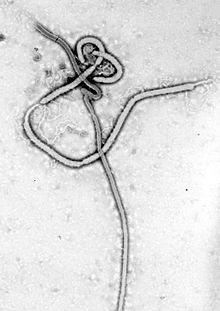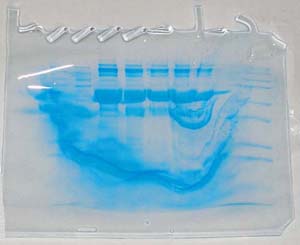The following is a work of fiction.
I have brown hair. Not like my two older sisters, who both have this beautiful long spun-gold hair. They got that from my mom; that, and their warm brown eyes that look like chocolate dipped in honey.
I’m my dad’s daughter. Short and thin, with eyes that aren’t quite green and aren’t quite blue. And, of course, the hair. I keep it short, cut straight across the bottom. It’s so thick and lank and heavy, curling just a bit at the ends, that just having it on my head feels like a sin. And my hair isn’t the only thing wrong with me, either.
My oldest sister, the one with the husband and three beautiful children, is a math professor at an elite college on the West Coast. My other sister was a math major too, before she took a hiatus one semester shy of graduation. A hiatus, they said. But we all knew she wouldn’t be coming back.
Me, I never understood math all that well. I used to drive my sisters crazy asking for homework help. You’d have to be a dummy not to understand partial fractions, they said. And I was. I was, and am, not at their level – intellectually. I got into this school, and bullshitted my way through three years of chemistry, on hard work and guts. Trying to drive out the demons.
When we were all little, I was the bad one. I always acted up, stealing my sisters’ things, getting put in timeout at school for scratching another kid until they bled. I don’t know. I was just angry, all the time, angry because I wasn’t Georgia, the smart one, or Genie, the pretty one. I was just me. Jane, plain as white bread.
I used to take dance classes. I’d throw myself into the routines and the exercises, willing myself to become stronger and leaner, to stand out in something, at least. One night, my dad was late picking me up from class. All the girls went home while I sat in the lobby and watched episode after episode of 7th Heaven. Finally someone came to pick me up. It wasn’t my dad, or my mom either. She said she was a nurse. I asked her for the password, the one my dad and I had come up with to make sure that no evil stranger ever picked me up off the streets, and she told it to me. Peanut butter pancakes.
My dad passed away that night, by his own hand. He lost his battle with schizophrenia at last, after all the nights of arguing, the long walks down hot desert streets, the “vacations” he’d taken. From that moment on, we all lived in the shadow, darker than my hair. The fear that one of us girls would be chosen, by some twist of fate or genetics, to inherit the illness.
Genie broke with it during her senior year. Her roommate found her huddled on the sill of their open window, telling an invisible secret agent that she wouldn’t let him track her movements through the gold fillings in her mouth. She went to the hospital, then a group home, where she got sicker. Even now, with the medication, she isn’t her old self. She’s flat, somehow, like part of her has died. She doesn’t want to go back to school. She couldn’t help me with my p-chem homework one night. She works in a restaurant washing dishes.
So there’s all that.
But then there’s my dad, who used to teach chemistry in high school. His hair went gray early, but I remember looking at old pictures of him and my mom together. Smiling on the slopes of Aspen, dancing on a Mexican beach. Mom asked him out, not the other way around – he was too shy – but his face never ceased to light up around her. She was his entire world, the one person clear in all his fogs. His hair a ruffled seal-brown. I often imagine them in their early married days, perhaps during their honeymoon in France, flicking soap suds at each other over the dishes, sleeping in late wrapped in each other’s arms.
One afternoon I came to him crying. The girls at school had once again made fun of my thick eyebrows, my overly full face, my long round nose. When I told Genie on the bus ride home, she simply answered, “So? It’s true.”
“Dad,” I said, “why do I have to have plain brown hair? It looks so ugly on me. No one’s ever going to love me. I’m ugly and stupid and I’m going to have to pullweeds for a living, since that’s what I am.”
Dad simply said, “Come here,” and took me into the bathroom. Here, he cupped my straggly hair back from my face. ”Who do you see in that mirror?”
“Me,” I replied, trying to stop the tears.
He sighed. ”You look so much like your mother – minus the hair, of course. She’s not pretty, you know. No outside observer would look twice at her, she says, and maybe she’s right. But you know what? To me – to us – she’s beautiful.
And she’s not just beautiful because of what she looks like, either. She’s beautiful because we love her, and we love her because of what’s inside of her. Just like we love you, not because of your funny little nose, but because you’re smart and kind and charming. And that lasts.”
I looked up at him and sniffed. His eyes, muddy blue like mine, were sincere and lucid. Yep, he meant it. ”You … really think I’m smart?”
He laughed. ”Yes. Who helped me grade all those tests last week? Genie? No, she’s too busy brushing her hair and trying on makeup. Nah, it was you. You getchemistry. And that makes me happy.”
Gosh, no one could make me feel smart and pretty like my dad. No one else has, either. I’ve never had a boyfriend, unless you count the one who stood me up for senior prom. I live in fear of failing a class, being kicked out of school, or – worse, waking up one day in a white hospital bed, restraints on my wrists.
I used to hate my dad. I still do, sometimes, because he abandoned his family, because he dared to pass on his flawed genes, because I cringe a little every time I look in the mirror and see the big muddy mess on my head.
But there are other times. Like when I get a Skype call from my sister and her littlest son, the one with my dad’s eyes. Or when I ace a neurochem test and walk out of that classroom with a little swing in my step. Or last spring, at the academic awards dinner, when my mentor, who was also my orgo professor, raised her glass: “To Jane Smith, the most talented – and most beautiful – student I’ve had in a very long time.”
Times like that, I remember holding onto my dad’s hand and looking into his eyes as he tells me I am beautiful and loved. I remember Genie’s hugs on Christmas morning, and how her hair always smelled like freshly mown grass and mountain air. I remember, and I smile, because life is for the living.
Then, as I get ready for the next class or interview or luncheon, I pop a hand mirror out of my bag and check my appearance, the round, bookish face, the somber blue-green eyes, the potatoish nose. Oh, and the hair.
“Who do you see in that mirror, Jane?”
“Me, Dad. I see me.”








